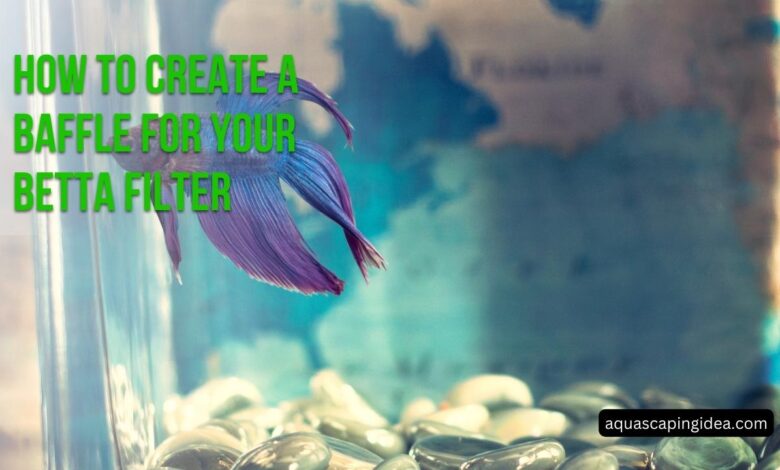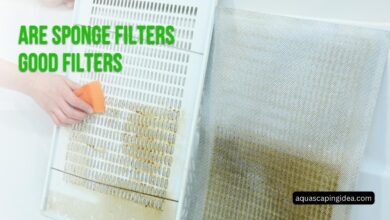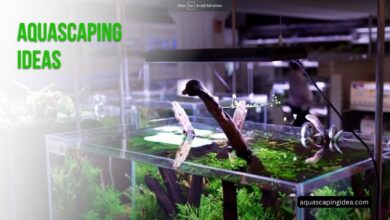How To Create A Baffle For Your Betta Filter?

Betta fish make colorful, personable additions to freshwater tanks. However, their long, flowing fins make them vulnerable to strong filter outflows. High flow rates stress bettas, tear delicate tails, and can even sweep fish into filter intakes. Luckily, there are simple DIY solutions for baffling filters to create the low-flow habitats bettas prefer. Read on to learn everything you need to know to modify filters to keep your bettas safe, healthy, and thriving.
How to Baffle High Flow Filters
Filter systems are vital pieces of aquarium equipment that remove waste and keep water clean. Standard hang-on-back (HOB) and canister filters pump water at rapid rates suitable for community tanks. However, they generate too much flow for delicate betta fish. Their large fins catch in the turbulence, forcing them to constantly battle the current. Over time, the exertion stresses fish and shreds flowing tails.
Baffle systems decrease flow to rates bettas easily swim in while still permitting filtration. They also prevent injuries and fin damage caused by intakes. Baffling filters improves quality of life, health, finnage, and activity levels for betta residents. With simple homemade or store-bought modifications, keepers can get their systems’ flow under control. This article will cover multiple methods for engineering baffles in both HOB and canister filter systems.
Assessing Filter Flow
Start by scrutinizing filter outflow in an empty tank. Turn the system on and observe the current’s strength at different points. Target dead zones to place decor and plants for shelter later. Measure flow rates in gallons per hour (GPH) using testing cups. Filters are considered high velocity for betta habitats at:
HOB filters: Over 100 GPH Canister filters: Over 150 GPH
These churning currents sweep bettas around and stress even the strongest swimmers. Use baffles to reduce rates to no more than:
HOB filters: 50-100 GPH Canister filters: 75-100 GPH
Slowing Water Down in HOB Systems
For hang-on back units, outflow originates from a single nozzle, making controlling current straightforward. Several inexpensive, easy-to-install options are available or can be fashioned at home.
Sponge Baffles
Rectangular aquarium sponges friction-fit neatly into filter chambers. Water must permeate through small pores to exit, decreasing GPH substantially. Open cell sponges work best to permit adequate flow. Change out old sponges during routine filter maintenance to prevent flow reductions from gunk accumulation.
Plastic Bottle DIY Baffles
Empty water/soda bottles make free, readily available baffling materials. Simply cut bottles to desired lengths to sleeve over the outflow nozzle. Use hot glue to adhere bottles in place neatly. The bottle’s tapered shape encourages water to exit the end gently instead of spraying out with force. Adjust flow by shortening or widening the end hole as needed with an aquarium-safe hole puncher.
Fiber Filter Media
Products like filter floss also diminish flow when packed into the filter box surrounding the pump intake. Avoid completely blocking water pathways so flow continues. Check manufacturer guidelines before putting foreign media into filters.
Commercial Mesh Reducers
Plastic mesh reducers designed specifically for HOB filters are readily available online or in pet stores. They insert directly into the outflow to cut speed and turbulence while permitting needed circulation.
Baffling Canister Filters
Canister systems’ external pumps complicate adjusting flow rates. But with clever placement of in-line control valves and spray bars, keepers can find a happy medium.
In-Line Valves Clear
PVC ball valves installed on filter hoses restrict circulation rates. Use valves’ handles to fine-tune flow as needed. Place valves closer to the tank on outflow lines for easy access.
Spray Bar Redirects
Positioning adjustable spray bar outputs along back walls forces water to travel the tank’s length before returning. This increases beneficial movement while eliminating harsh direct currents. Angle nozzles to point toward rear corners or the surface to further reduce turbulence.
Betta fish thrive in optimized tanks with appropriate filtration that keeps water clean while replicating their natural gentle environments. By baffling filters, aquarists can achieve needed waste processing without forsaking bettas’ health and fin integrity. Simple, inexpensive DIY fixes take little time to complete. And now dozens of commercial products cater to modifying flows, meaning solutions exist for every set-up. With these tricks for reducing flow, betta fish can live happily ever after in spaces tailored just for them.
FAQs
Will baffling filters compromise water quality?
Adding baffles should not significantly reduce vital mechanical and chemical filtration if done properly. Biological processes may slow moderately, making testing and changes key.
Can I baffle the filter in my betta’s bowl?
Most small bowls (under 2.5 gallons) cannot support adequate filtration needed to maintain water quality and fin health. Upgrade your betta to at least a 5 gallon filtered, heated tank.
My fish struggles swimming even in a baffled tank. What should I do?
Compromised swimming ability indicates underlying health issues, commonly caused by uncycled systems. Ensure ammonia and nitrites show 0ppm. Perform partial water changes and dose stress coat to support recovery. Seek vet care if problems persist. Consider lowering water levels as needed while issues resolve to facilitate easier movement near the surface.
Why does my betta still hide all the time after installing a baffle?
Preference for resting versus active swimming varies greatly among individual bettas. However, continued lethargy signals potential stressors. Check water parameters and perform partial water changes to restore clean conditions. Make sure they have plenty of enrichment via live plants, caves, etc and proper heating.
Can I turn my filter off at night when fish are resting?
Turning filters completely off, even temporarily, crashes the nitrogen cycle allowing dangerous chemicals like ammonia to accumulate. Bettas and bacteria need continually circulating oxygenated water. Leave systems running 24/7 and monitor parameters daily the first weeks after set-up to ensure stability.
Conclusion
Keeping betta fish goes beyond just providing the basic necessities of food and clean water. Giving them an appropriately shaped habitat enables natural behaviors that result in healthier, happier pets. Avoid forcing these adaptable but delicate fish to conform to unnatural environments just because products happen to exist. With some simple modifications, the average tank can be sculpted to meet bettas’ specific needs. Use these filter baffling tips to create a smooth water wonderland perfect for your crowntail, plakat, or long-finned friend. They’ll thank you by letting their vibrant personalities shine.



